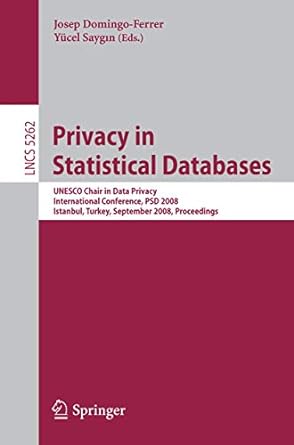Question
Queues and Stacks Purpose: To review queues and stacks in Java, and to use the built-in Stack class and Queue interface. The Stack class is
Queues and Stacks
Purpose: To review queues and stacks in Java, and to use the built-in Stack class and Queue interface.
The Stack class is a generic class containing these methods:
-
public void push(E value) - pushes a new value onto the Stack
-
public E pop() - pops the next value off of the stack and returns it; throws EmptyStackExceptionl if stack is empty
-
public E peek() - returns the next value on the Stack but does not pop it off of the stack; throws EmptyStackExceptionl if stack is empty
-
public boolean empty() - returns true if the stack is empty; false if not empty.
You can declare a stack with a statement such as:
Stack
You can print a stack with the toString() method.
More information on the Stack class may be found at:
https://docs.oracle.com/javase/8/docs/api/java/util/Stack.html
-
Create a driver program that implements and tests the following method:
public static Stack
Test your method by adding code to the main method that creates a stack, pushes items onto the stack, and then calls your copy method. Still within the main method, print both the original stack and the copied stack to verify that the copy method worked as expected.
NOTE: TO RECEIVE FULL CREDIT YOU MAY NOT USE THE BUILT IN COPY METHOD, YOU SHOULD IMPLEMENT IT USING THE ABOVE METHODS
Example:
Before the call to copy, stack1 contains 1, 3, 5
Call the copy method: Stack
After call to copy, stack1 contains 1, 3, 5 and stack2 (the copied stack) contains 1, 3, 5
(note that the order of stack2 is the same as stack1)
The Queue interface extends java.util.Collection with the following methods:
public void add(E e) - adds a new value onto the Queue; throws IllegalStateException if no space is currently available
public boolean offer(E e) - adds a new value onto the Queue; returns true if e was added to the queue, returns false if not
public
public
public
You can print a queue with the toString() method.
Declaring a queue: Because the queue is an interface, it may not be instantiated. However, you can create a Queue object and then instantiate it with a LinkedList:
Queue
More information may be found at: https://docs.oracle.com/javase/8/docs/api/java/util/Queue.html
-
In your driver program, implement and test the following method:
public static Queue
The evenOddMerge method should destructively merge 2 pre sorted queues into a new larger sorted queue such that all the evens are in order then all of the odds are in order. You may assume that the elements in q1 and q2 are in order then the merge method is called.
In the main method of your driver program, create two queues with several items each, print the queues, then call the merge method. Then print the original and merged queues.
Example:
Before the call to merge, q1 contains 1, 2, 4, 6 and q2 contains 0, 1, 2, 3, 5
Call the merge method: Queue
After the call to merge, q1 and q2 are empty and q3 contains 0, 2, 2, 4, 6, 1, 1, 3, 5
The project must compile in order to get any credit. Make sure the project is named Week9_Practice_LnameFname then export your Eclipse project to a zip file (File->Export-> General-> Archive File->name the archive Week9_Practice_LnameFname) and upload it to the dropbox in Pilot. Make sure that the correct project in the Project Explorer view is selected when you do the export. You can right-click on it instead of going through the File menu to be sure.
Step by Step Solution
There are 3 Steps involved in it
Step: 1

Get Instant Access to Expert-Tailored Solutions
See step-by-step solutions with expert insights and AI powered tools for academic success
Step: 2

Step: 3

Ace Your Homework with AI
Get the answers you need in no time with our AI-driven, step-by-step assistance
Get Started


